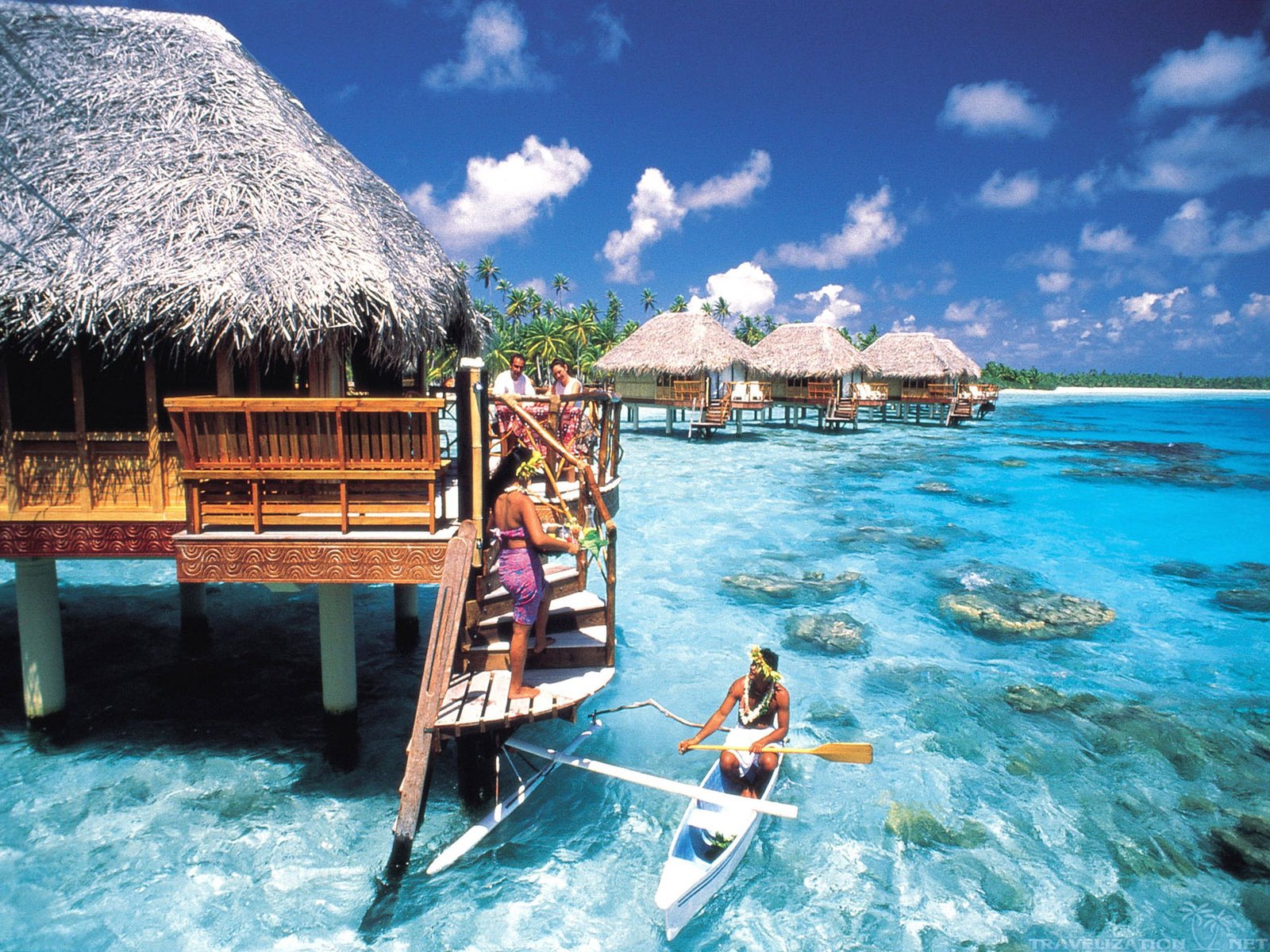Tropical places to vacation offer a diverse range of experiences, from sun-drenched beaches and vibrant coral reefs to lush rainforests and ancient cultural sites. This guide explores the best destinations, activities, and logistical considerations for planning your perfect tropical getaway, ensuring a memorable and enriching journey.
Whether you’re seeking adventure, relaxation, or cultural immersion, the tropics hold something for everyone. We’ll delve into popular destinations, highlighting unique characteristics and offering practical advice on budgeting, packing, and staying safe. From choosing the right accommodation to navigating transportation and understanding potential health concerns, we’ll equip you with the knowledge to plan a seamless and unforgettable tropical vacation.
Packing Essentials for Tropical Travel
Planning a tropical getaway requires careful consideration of what to pack. The climate demands specific clothing and gear to ensure comfort and safety throughout your trip. Over-packing is a common pitfall, adding unnecessary weight and stress. This guide provides a detailed packing list and tips to help you travel light without sacrificing essentials.
In this topic, you find that senior trip destinations is very useful.
Clothing Essentials for Tropical Climates
Appropriate clothing is paramount for enjoying a tropical vacation. Lightweight, breathable fabrics are key to staying cool and comfortable in the heat and humidity. Consider the activities planned and pack accordingly. For example, hiking requires sturdy footwear and moisture-wicking materials, while beach days call for swimwear and loose-fitting clothing.
- Lightweight, breathable shirts (linen, cotton, or moisture-wicking fabrics): Pack at least one for each day, plus a few extra.
- Shorts or skirts: Opt for quick-drying materials.
- Lightweight pants or trousers (linen or cotton): These are useful for evenings or more formal occasions.
- Swimsuit(s): Pack at least two to allow for drying time.
- Underwear and socks: Choose breathable materials like cotton or merino wool.
- Comfortable walking shoes: Essential for sightseeing and exploration.
- Sandals or flip-flops: Ideal for the beach and casual wear.
- A light jacket or sweater: Evenings can be cooler, especially near the coast.
- Sun hat: Crucial for sun protection.
- Dressy outfit (optional): Depending on your itinerary.
Toiletries and Personal Items
Travel-sized toiletries are essential for keeping your luggage light and complying with airline regulations. Remember to check the regulations for carrying liquids in your carry-on bag. Replenishing items at your destination is often possible, reducing the need to pack everything from home.
- Sunscreen (high SPF): Essential for protecting your skin from the strong tropical sun.
- Insect repellent: Protect yourself from mosquitoes and other biting insects.
- After-sun lotion: Soothe sunburned skin.
- Lip balm with SPF: Protect your lips from sun and dryness.
- Toothbrush, toothpaste, and floss.
- Shampoo, conditioner, and soap (travel sizes).
- Deodorant.
- Medications (prescription and over-the-counter): Pack enough for the duration of your trip, plus a few extra days.
- First-aid kit: Include bandages, antiseptic wipes, pain relievers, and any personal medical necessities.
Packing Light: Strategies and Techniques, Tropical places to vacation
Packing light reduces stress and makes travel more enjoyable. Careful planning and choosing versatile items are key to success. Consider rolling your clothes instead of folding them to save space and prevent wrinkles.
- Choose versatile clothing items: Select clothing that can be mixed and matched to create multiple outfits.
- Roll your clothes: This saves space and minimizes wrinkles.
- Use packing cubes: These help organize your belongings and compress your clothing.
- Wear your bulkiest items on the plane: This frees up space in your luggage.
- Leave unnecessary items behind: Be honest about what you truly need.
Health and Safety Considerations in Tropical Regions: Tropical Places To Vacation

Tropical vacations offer unparalleled beauty and adventure, but require careful planning to ensure a safe and healthy trip. Failing to take necessary precautions can quickly turn a dream getaway into a medical emergency. This section details essential health measures and safety protocols for travelers venturing into tropical climates.
Necessary Health Precautions and Vaccinations
Prior to departure, consulting a healthcare professional or travel clinic is paramount. They can assess individual risk factors and recommend appropriate vaccinations and preventative medications. Many tropical regions harbor diseases less common in temperate climates, such as malaria, dengue fever, typhoid, and yellow fever. Vaccinations, often requiring several weeks or months to become fully effective, are crucial for protection against these illnesses.
Furthermore, prescriptions for anti-malarial medication should be obtained and taken as directed, as prophylactic treatment is often necessary depending on the destination and time of year. Specific recommendations vary widely based on the traveler’s itinerary, duration of stay, and existing health conditions. Ignoring these recommendations can have severe consequences.
Potential Health Risks and Safety Mitigation Strategies
Tropical climates present unique health challenges. High humidity and temperatures can lead to heat exhaustion or heat stroke, particularly for those unaccustomed to such conditions. Staying hydrated by drinking plenty of water, avoiding strenuous activity during the hottest parts of the day, and wearing light-colored, loose-fitting clothing are essential preventative measures. Food and waterborne illnesses are also prevalent.
Practicing meticulous food hygiene—avoiding raw or undercooked food and sticking to bottled or purified water—is critical. Insect-borne diseases, such as malaria, dengue fever, and Zika virus, pose a significant risk. Using insect repellent containing DEET, wearing long sleeves and pants during dawn and dusk (peak mosquito biting times), and sleeping under mosquito nets can significantly reduce exposure.
Sunburn is another common concern. Applying high SPF sunscreen frequently, wearing protective clothing, and seeking shade during peak sun hours are vital for preventing sun damage. Finally, awareness of local wildlife is important; avoiding contact with potentially dangerous animals and seeking appropriate medical attention for any bites or stings is essential.
Importance of Travel Insurance and Emergency Preparedness
Comprehensive travel insurance is strongly recommended for all tropical destinations. Unexpected medical emergencies, including evacuations, can incur substantial costs. Travel insurance provides financial protection against these unforeseen expenses. Before departure, travelers should inform their insurance provider of their itinerary and any pre-existing medical conditions. Furthermore, developing an emergency plan is crucial.
This plan should include details of local emergency services, the location of the nearest hospital, and contact information for family and friends. Packing a comprehensive first-aid kit containing essential medications, antiseptic wipes, bandages, and pain relievers is also vital for dealing with minor injuries and ailments. Finally, carrying a copy of your passport, visa (if required), travel insurance information, and emergency contact details separately from your main luggage is an important safety precaution.
Environmental Impact of Tropical Tourism

The burgeoning popularity of tropical destinations presents a double-edged sword. While these regions offer unparalleled beauty and economic opportunities, the influx of tourists poses significant threats to their delicate ecosystems. Uncontrolled development, resource depletion, and pollution are just some of the consequences of unsustainable tourism practices. Understanding these impacts and adopting responsible approaches is crucial for preserving these invaluable environments for future generations.The environmental impact of tourism on tropical ecosystems is multifaceted and often severe.
Coral reefs, vital biodiversity hotspots, are particularly vulnerable to damage from careless snorkeling and diving practices, boat anchors, and pollution from sunscreen chemicals. Deforestation to accommodate hotels and infrastructure destroys habitats, leading to biodiversity loss and contributing to climate change. Increased waste generation, including plastic pollution, contaminates beaches and oceans, harming marine life and degrading the overall aesthetic appeal of these destinations.
Furthermore, the increased demand for resources like water and energy often strains local infrastructure and can lead to unsustainable extraction practices.
Sustainable Tourism Practices in Tropical Destinations
Many tropical destinations are actively implementing sustainable tourism practices to mitigate the negative environmental impacts. Costa Rica, for example, has invested heavily in ecotourism initiatives, promoting responsible travel and supporting local conservation efforts. This includes the development of eco-lodges built with sustainable materials and operating with minimal environmental impact, coupled with guided tours that educate visitors about the local flora and fauna.
Similarly, the Maldives has implemented stringent waste management programs and is actively investing in renewable energy sources to reduce its carbon footprint. These initiatives demonstrate a commitment to balancing economic development with environmental protection.
Minimizing Travelers’ Environmental Footprint
Individual travelers play a crucial role in minimizing the environmental impact of their trips. Choosing eco-friendly accommodations, such as those certified by organizations like Green Globe or LEED, is a significant step. Supporting local businesses and communities, rather than large international corporations, helps to distribute economic benefits more equitably and often encourages more sustainable practices. Reducing water and energy consumption during stays, avoiding single-use plastics, and properly disposing of waste are also essential.
Opting for public transportation or walking instead of relying on private vehicles minimizes carbon emissions. Finally, responsible snorkeling and diving practices, such as avoiding contact with coral reefs and respecting marine life, are vital for preserving these fragile ecosystems. By making conscious choices, travelers can significantly contribute to the long-term health and sustainability of tropical destinations.
Planning a tropical vacation requires careful consideration, but the rewards are immense. By understanding the nuances of different destinations, budgeting effectively, and prioritizing safety and sustainability, you can create a truly unforgettable experience. This guide serves as a starting point for your journey, inspiring you to explore the wonders of the tropics and create memories that will last a lifetime.
Remember to research your chosen destination thoroughly and embrace the spirit of responsible travel to preserve these precious ecosystems for future generations.



